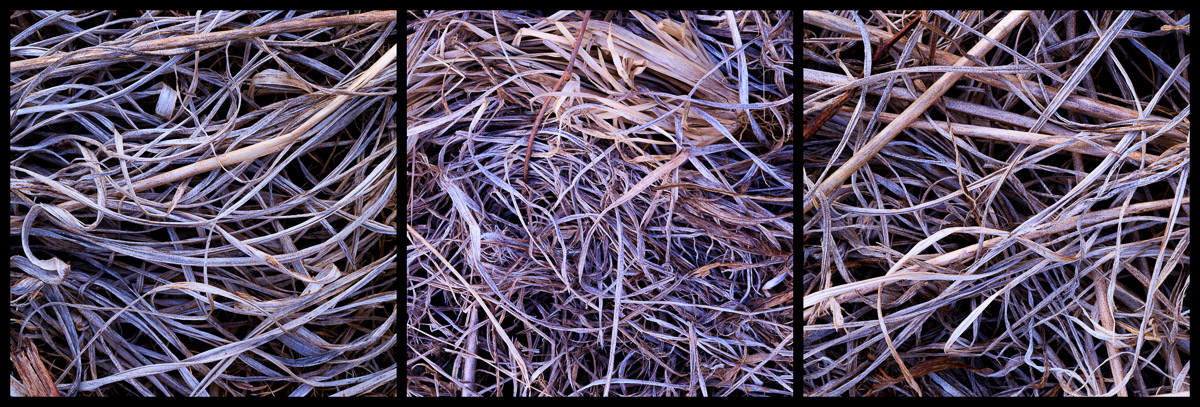It doesn’t happen often, but, every now and then, I will see something and instantly have an idea for a photograph. And, that was exactly what happened with these images.
I had stepped outside late one evening to get my dog back in the house when I saw these dead grasses my wife had pulled out of the flower bed several weeks prior. They were lying in the yard in various clumps, and I paid them little attention.
Then I started to take a closer look and started to notice not dead grasses but a series of lines and curves, and I quickly became intrigued. I ran inside and grabbed my camera and tripod. Going back outside, I handheld my camera as I moved around the various clumps looking for a composition.
Finally, I found a composition I was pleased with. I set up my tripod directly over the grasses so I could keep the back of the camera parallel to the ground to maintain as much depth of field as possible. Then, I determined the proper exposure, pressed the shutter button, and captured the image.
Looking at the picture on the back of my camera, I began wondering if it could really stand on its own. I became convinced that it couldn’t. That’s when the idea of creating a triptych came to me.
In photography, a triptych typically consists of separate images that are variants on a theme. To complete the triptych, I needed two more images. It was getting dark, so I had to work quickly to find complementary compositions.
After getting my three images, I opened them in Lightroom and processed each one as I normally would. I then opened all three in Photoshop. Selecting the picture I wanted to use as the center image, I expanded the canvas size to account for the combined lengths of all three frames plus a small gap between the images. I then copied each of the remaining images, pasted them into the expanded canvas, and moved them into position being careful to make sure they were properly aligned. Finally, I expanded the canvas size once more to include a black border around the entire composition.
